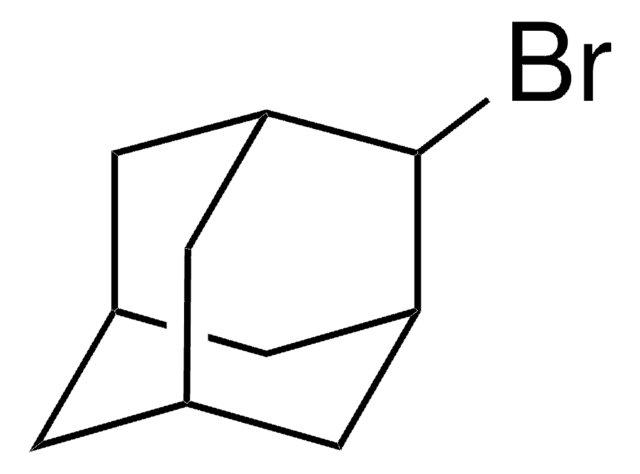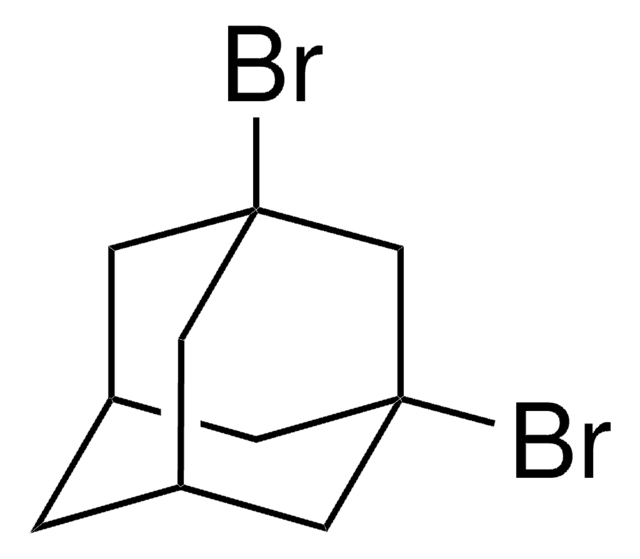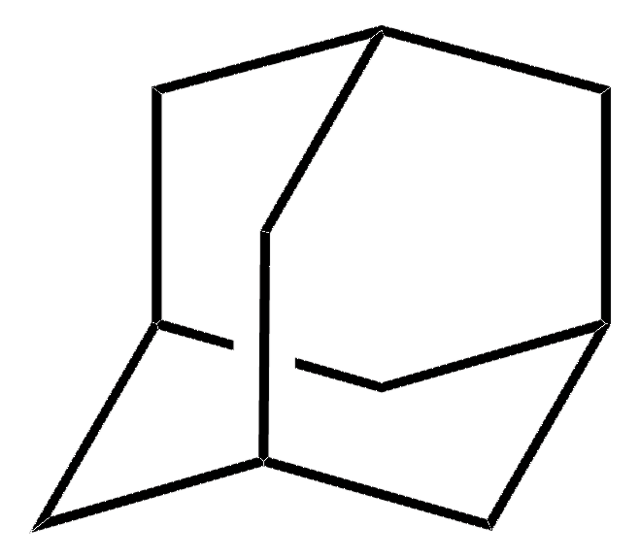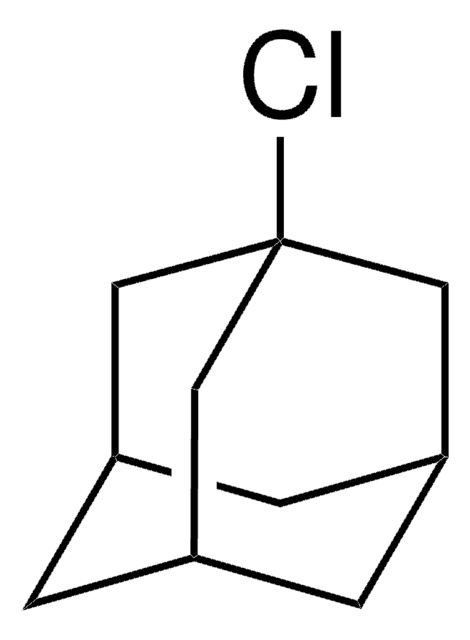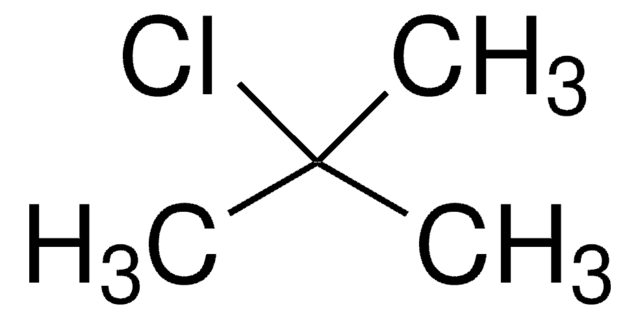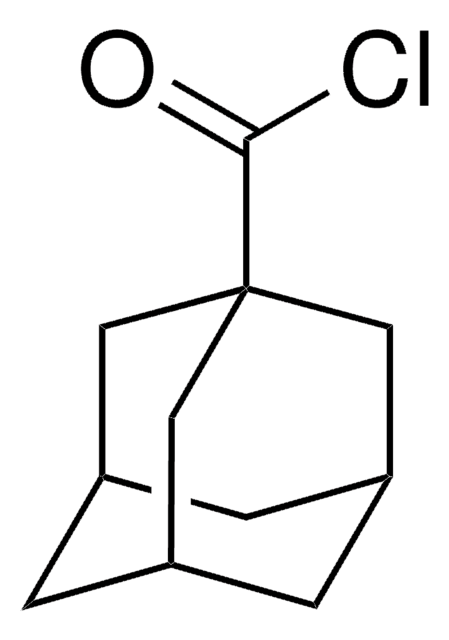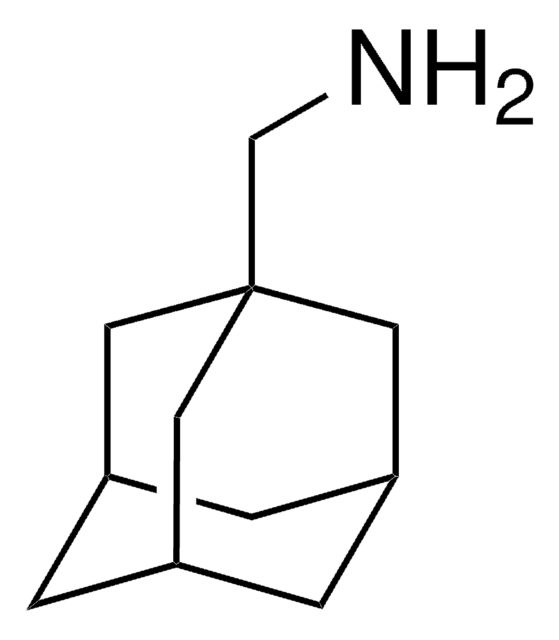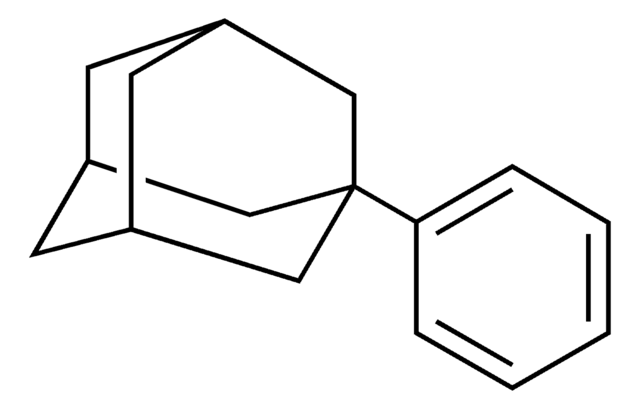109223
1-Bromoadamantane
99%
Synonym(s):
1-Adamantyl bromide
Sign Into View Organizational & Contract Pricing
All Photos(2)
About This Item
Empirical Formula (Hill Notation):
C10H15Br
CAS Number:
Molecular Weight:
215.13
Beilstein:
1098857
EC Number:
MDL number:
UNSPSC Code:
12352100
PubChem Substance ID:
NACRES:
NA.22
Recommended Products
Quality Level
Assay
99%
mp
116-118 °C (lit.)
functional group
bromo
SMILES string
BrC12C[C@H]3C[C@H](C[C@H](C3)C1)C2
InChI
1S/C10H15Br/c11-10-4-7-1-8(5-10)3-9(2-7)6-10/h7-9H,1-6H2/t7-,8+,9-,10-
InChI key
VQHPRVYDKRESCL-CHIWXEEVSA-N
Looking for similar products? Visit Product Comparison Guide
General description
1-Bromoadamantane forms inclusion complexes with α-, β-, and γ-cyclodextrins. It causes the alkylation of Co(II) complexes of β-diketones.
Application
1-Bromoadamantane was used in the synthesis of a new organic–organic nanoscale composite thin-film dielectric.
Storage Class Code
11 - Combustible Solids
WGK
WGK 3
Flash Point(F)
Not applicable
Flash Point(C)
Not applicable
Personal Protective Equipment
dust mask type N95 (US), Eyeshields, Gloves
Choose from one of the most recent versions:
Already Own This Product?
Find documentation for the products that you have recently purchased in the Document Library.
Customers Also Viewed
Jitendra N Tiwari et al.
ChemSusChem, 3(9), 1051-1056 (2010-07-14)
A new organic-organic nanoscale composite thin-film (NCTF) dielectric has been synthesized by solution deposition of 1-bromoadamantane and triblock copolymer (Pluronic P123, BASF, EO20-PO70-EO20), in which the precursor solution has been achieved with organic additives. We have used a sol-gel process
Alkylation of ?-diketones through their co (II), co (III) and zn (II) complexes. 1-Bromoadamantane as alkylating agent.
Gonzalez A, et al.
Tetrahedron Letters, 26(31), 3735-3738 (1985)
P. M. Ivanov et al.
The Journal of organic chemistry, 61(20), 7012-7017 (1996-10-04)
The inclusion complexes between the most commonly used cyclodextrins (alpha-, beta-, and gamma-CD) and 1-bromoadamantane were prepared and studied experimentally by NMR methods and by molecular dynamics simulations (AMBER force field) with solvation. The NMR results suggest host/guest ratios of
Cheng Li et al.
Analytica chimica acta, 1066, 121-130 (2019-04-28)
A visual, rapid, and sensitive method for the detection of two algal metabolites, geosmin (GSM) and 2-methylisoborneol (2-MIB) using a competitive displacement technique based on molecular imprinted polymers (MIPs) and fluorescent tags was developed. In this method, fluorescent tags that
Our team of scientists has experience in all areas of research including Life Science, Material Science, Chemical Synthesis, Chromatography, Analytical and many others.
Contact Technical Service
